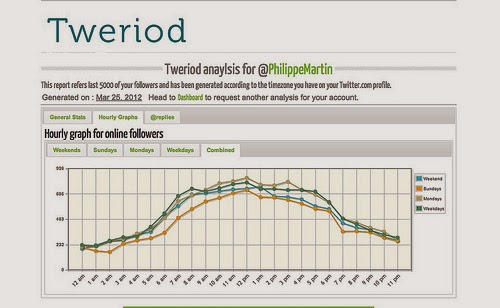This Tech Talk was given by GWS Media director David Graves on February 12th, 2014

Image via Skittles Facebook Page
If what you offer is not something that customers normally purchase online, then your conversion goal might be to receive a phone call or email, a contact form submission, an expression of interest in a seminar or event, or something else that captures personal details and qualifies the interest.
These things would be good ways to tangibly measure the ROI of your social media strategy.
An integrated approach is best - if you're receiving interest from social media, you need to ensure the tools are there for customers to convert in the easiest way possible.
For example, if your social media campaigns are linking back to your website, you should double check that the landing page in question includes wording that speaks to these referrals, easy ways for customers to reach you, and possibly additional conversion options such as newsletter or blog subscription.
1. Know your Target Market
Know their wants, their pain points, and what they search for; and base your social media strategy around that target market.
Tools like Quantcast can help you investigate and break down the audience for a selection of (mostly larger) web sites that have taken part in their system.
If you are after a similar target market to that of a particular web site, then this website could provide some very interesting information - geographic and demographic data, and keywords that indicate an interest in your product / service.

2. Use attractive images all the time

This is a given for platforms like Pinterest and Instagram, but if you add a status update to a Facebook business page with no image, then that’s a bit of a wasted opportunity.
You've got a lot of competition out there, and an abundance of text posts is unlikely to catch anyone's eye.
3. Use Social Media Management Tools the Right Way
Hootsuite and other tools are invaluable for posting one message multiple times or scheduling content over a period, which is massively helpful for busy small businesses.
However, it can also get too easy to rely on these things sometimes.
You can save a lot of time with these tools, but try also to tailor your posts across social platforms and to intersperse with real-time engagement when you can.
4. Use the Appropriate Channels for your Business
For example, a clothing brand would work very well on a visually heavy platform like Pinterest, but a bookkeeping company is likely to do less well.
B2B businesses may also struggle to make Facebook work as well as Twitter when it comes to lead generation, depending on sector.
Media companies tend to work well across a range of platforms for different aims.
If you find one or two channels work well for you (and can deliver the volume you need), then why not concentrate on making those work better rather than spending time on others?
Your organisation probably doesn't need to be on every social media channel on the web.
5. Watch your Timelines and Respond in Good Time
Particularly where you have complaints, or people are letting off steam after a ‘full and frank’ discussion with your customer service department, leaving something unanswered for a long time may suggest to others that your customer service levels are lacking.
Faster responses look better, but not all organisations can justify having a member of staff constantly monitoring social media.
However, you can easily setup emails or text notifications, and ensure that at least once daily, these things are being checked.
Don’t ignore compliments either – they can nurture loyalty.
Here's an interesting article from the Guardian giving some more tips for handling online feedback.
6. Plan your Social Competitions and Offers
If you decide to offer a social media-based competition of some sort, try to make sure that whatever you’re offering as a reward doesn't cannibalise sales or make people hold off on a purchase to see if they’ll win a discount voucher.
For example, a week will help to get recipients looking around a website now rather than putting it off and then forgetting about it.
Conclusion:
In short, there are plenty of things to consider when putting together your social media strategy that can help to actually convert social leads to customers.
Look out in subsequent posts for parts twp & three of this talk, where I'll detail ways you can optimise landing pages for conversion, and take advantage of paid social advertising.
As a disclaimer, it is also still worth bearing in mind that specific conversion rates really doesn't have to be the be-all and end-all of social media.
As long as you’re making more money as a result of social media leads, and an acceptable return on the investment (whether time or cost or both) you've put into it, then it sounds like you're going in the right direction.
Continue to Part 2: the Sales Process & Social Media
